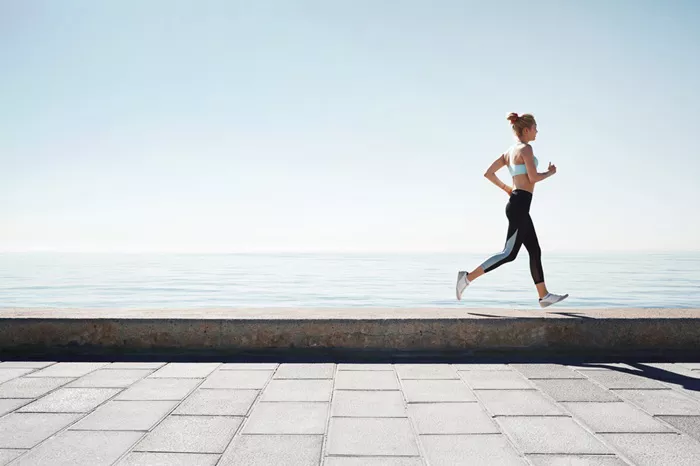Exercising outdoors has many benefits. It provides fresh air and important vitamin D. But with summer coming, it is important to take steps to stay safe during outdoor workouts.
While sunshine can boost your energy, exercising in the heat also brings risks. These include dehydration and heat exhaustion. Beginners and older adults are especially vulnerable.
Experts advise avoiding peak sun hours and seeking shade when possible. It is also important to listen to your body and rest if you feel overheated or tired.
To help you stay safe and active this summer, fitness professionals shared their top advice.
Michael Betts, a personal trainer and director of TRAINFITNESS, warns against starting summer workouts too quickly. “Many people jump into exercising in the heat without allowing their bodies to adjust. This is a mistake,” he says. “It usually takes one to two weeks for your body to get used to the heat.”
Older adults need even more time to adapt. Age affects how the body regulates temperature. Sweating becomes less effective, and the heart and blood vessels respond slower to heat stress. Betts suggests starting with shorter and less intense workouts, then gradually increasing the effort.
Use Sunscreen
Betts recommends applying sunscreen with at least SPF 30 about 30 minutes before going outside. Reapply every two hours or more often if you sweat a lot. Remember to cover often-missed spots like your ears, feet, and the back of your neck.
The best time to exercise is early morning, between 6 a.m. and 8 a.m., when temperatures are coolest and UV rays are weaker. “Your body temperature is naturally lower when you wake up, which helps with heat regulation,” Betts explains.
Avoid exercising between 10 a.m. and 4 p.m. if you can. This period has the highest temperatures and strongest UV rays. It is especially risky for older adults. If you must exercise during these hours, stay in the shade and lower your workout intensity.
Stay Hydrated
Sarah Campus, founder of LDN MUMS FITNESS, stresses the importance of hydration. “Sweating cools your body, but without enough water, you risk overheating or heat stroke,” she says.
Drinking enough water helps keep your mind sharp and your muscles working well. It also supports heart health and reduces dizziness or fainting.
Watch for warning signs like dry mouth, dry lips, headache, dizziness, dark urine, muscle cramps, and a fast heartbeat.
Wear Suitable Clothing
Betts explains that as we age, our skin cools down less effectively. This makes choosing the right clothes important. Cotton holds sweat and stops the body from cooling down. Instead, wear loose, light-colored clothes that reflect heat and let air flow.
Synthetic fabrics like polyester blends or merino wool help wick away moisture and dry quickly. Some even offer UV protection.
Protect Your Head
Wearing a wide-brimmed hat protects your face, ears, and neck from the sun. Hats with mesh panels or ventilation holes help keep your head cool. Hats with neck flaps offer extra protection for the neck.
Exercise in Shade
Betts suggests exercising in shaded spots or taking frequent breaks to rest. Circuit training moving between shaded stations is a good option. Bodyweight exercises under trees or covered areas let you train without direct sun.
Choose Lower Intensity Activities
Low to moderate activities work better than high-intensity workouts in hot weather. Betts recommends walking, gentle cycling, tai chi, or yoga. These generate less body heat and allow your cooling system to work better.
Cool Down Properly
Campus advises cooling down in a shaded area with light walking and deep breathing to lower your heart rate. Applying a cold compress to your wrists or neck can also help you cool down faster.

